New Application
The Add New Application page consists of the following sections.
Sections |
|---|
Create an Application |
Security Settings |
Source, Provider & Profile |
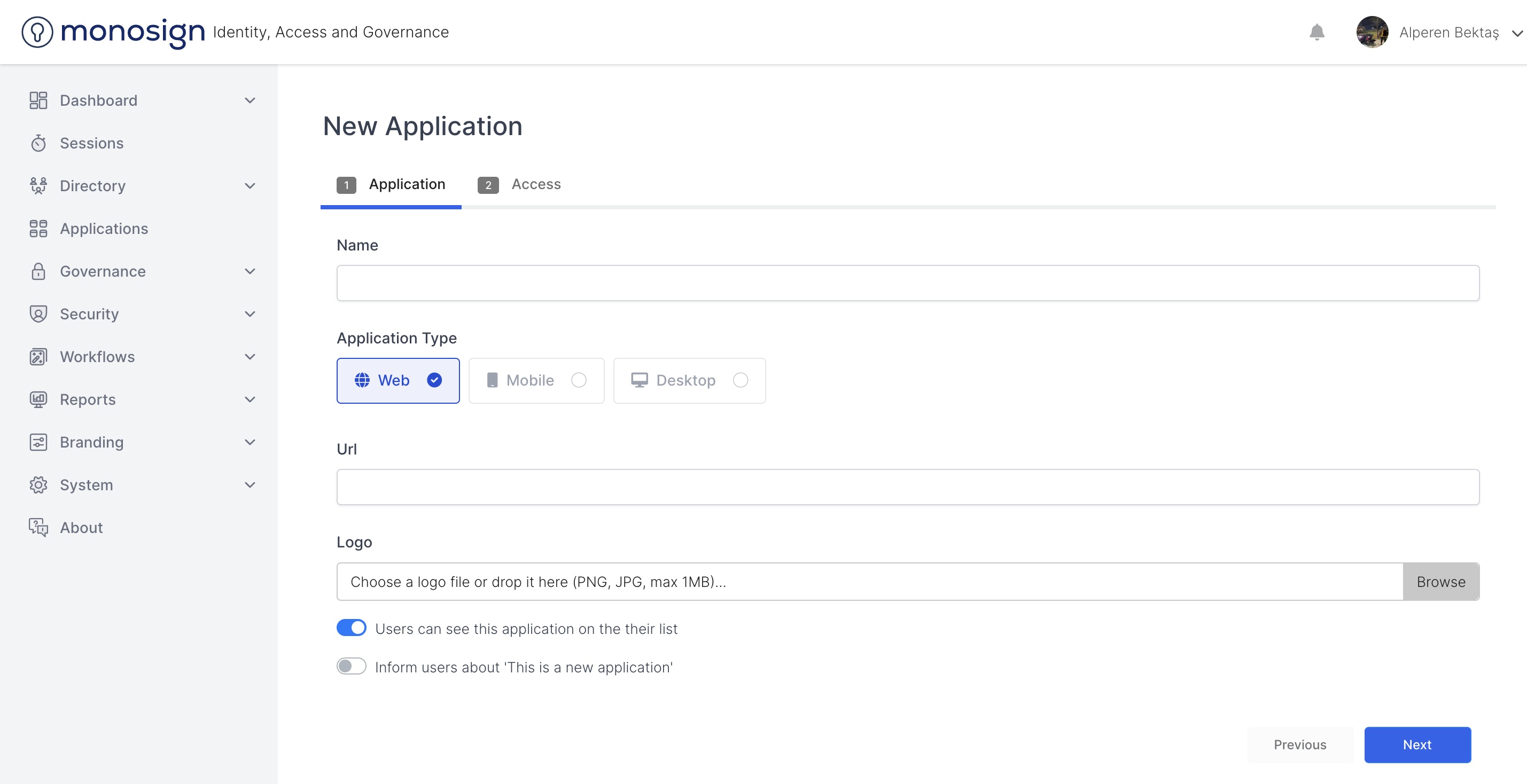
Create an Application
This is the section where you will apply your basic application and determine your basic application in the create application section.
Fields |
|---|
Title |
Name |
Application Type |
URL |
State |
Master |
Viewable |
Show New Badge |
consists of content.

Title
It is the area where the application title is determined.
Name
It is the field where the name of the application is determined.
Application Type
It is the area where the type/trying of the app and what type of developer can you perform from this store.
There are 4 tips / types defined on the product.
Untyped - The application will be an example of a type.
Desktop - Indicates that it is an application.
Web - Indicates that the application is web.
Mobile - Indicates that the application is mobile.
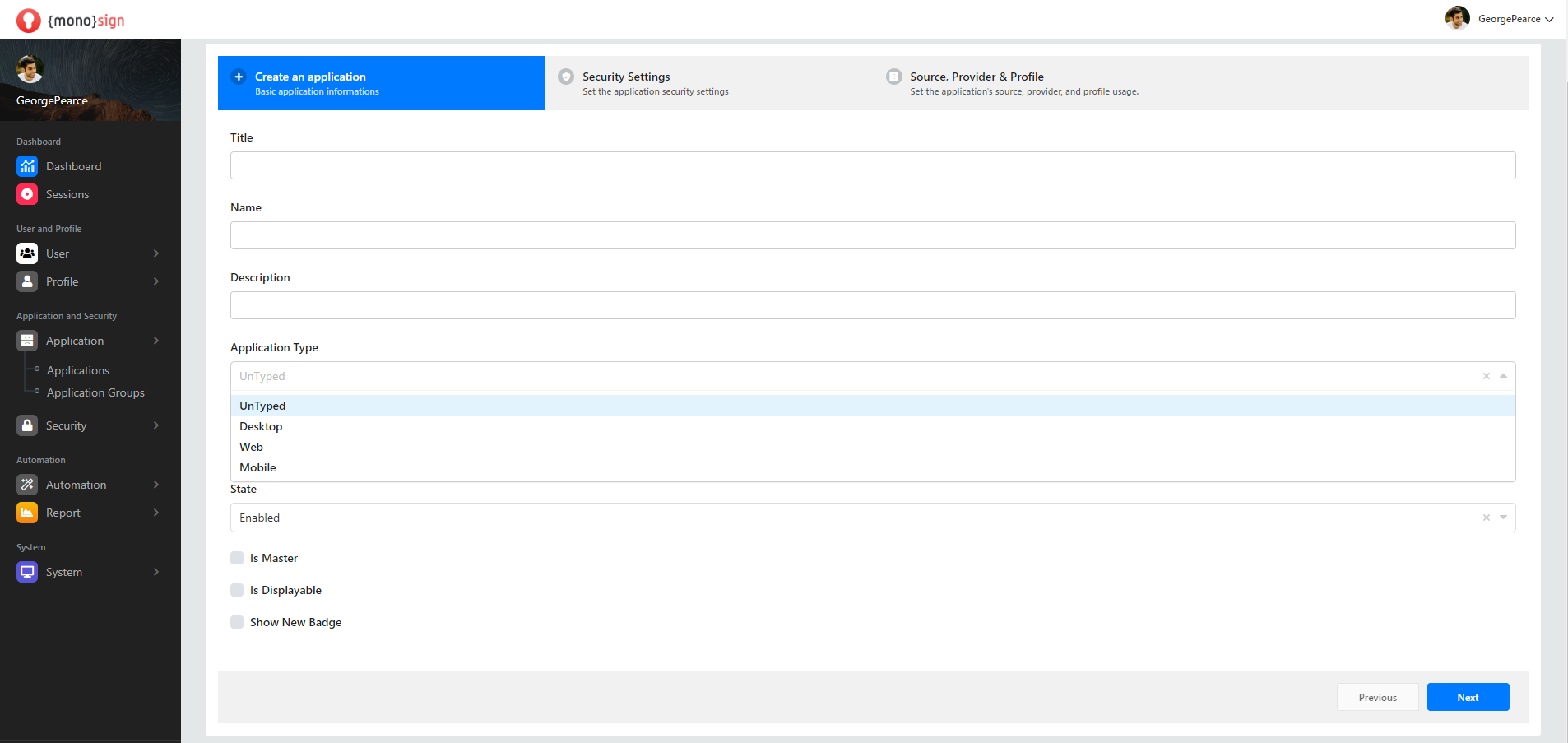
URL
It is the area of the application where uniform sourcing information is determined.
to indicate, to declare
It contains the status information of the application. Applications have two statefuls.
1 Active - Indicates that the application is active.
2 Disabled - Specify the exercise of the application.
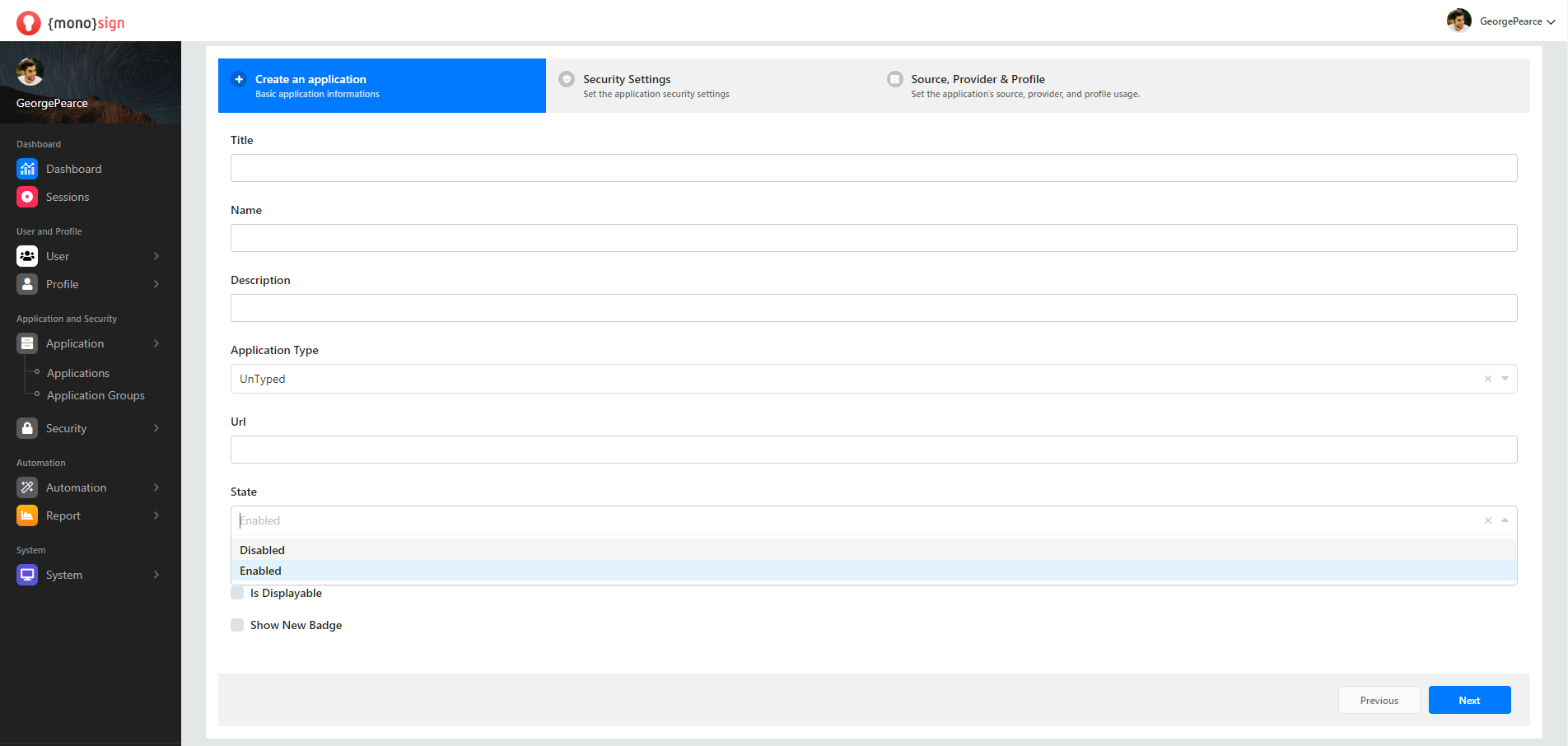
He is a master
The app is about the main app to give information about the main app and make sales.
Viewable
No information is given about whether the application is viewable or not, and about the approval products.
Show New Badge
Show or unhide the new badge is an option. You can show the new badge through the checkbox.
Security settings
Security settings is where you view the application settings settings and set the application security settings information.
Fields |
|---|
Application IP Restriction Type |
User IP Restriction Type |
Browser Restriction Type |
consists of content.
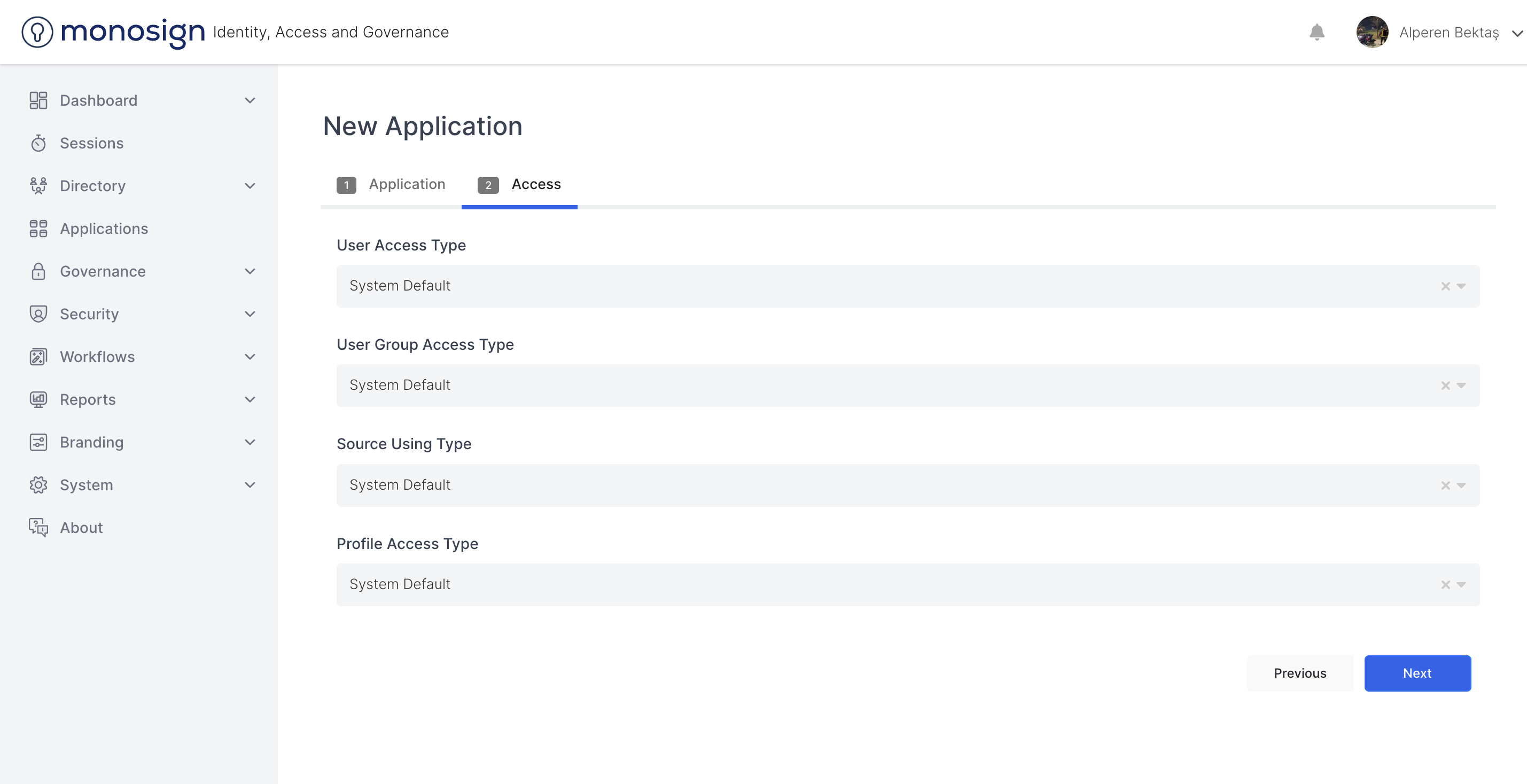
Application IP Restriction Type
This is the part where we provide the IP Restriction Type / Type of the application. IP restriction / type consists of 5
1 - System Default can be preferred as preferable.
2 - Allow all, allow all application IP restriction types / types can be selected.
3 -Allow All except preference option... Allow all App IP restrictions/types can be selected.
4 -Deny All, preference selection / application preferences can prefer IP restrictions. all but .
5 -Deny, preferences ... all but Application IP restrictions hint/types reject option can be selected.
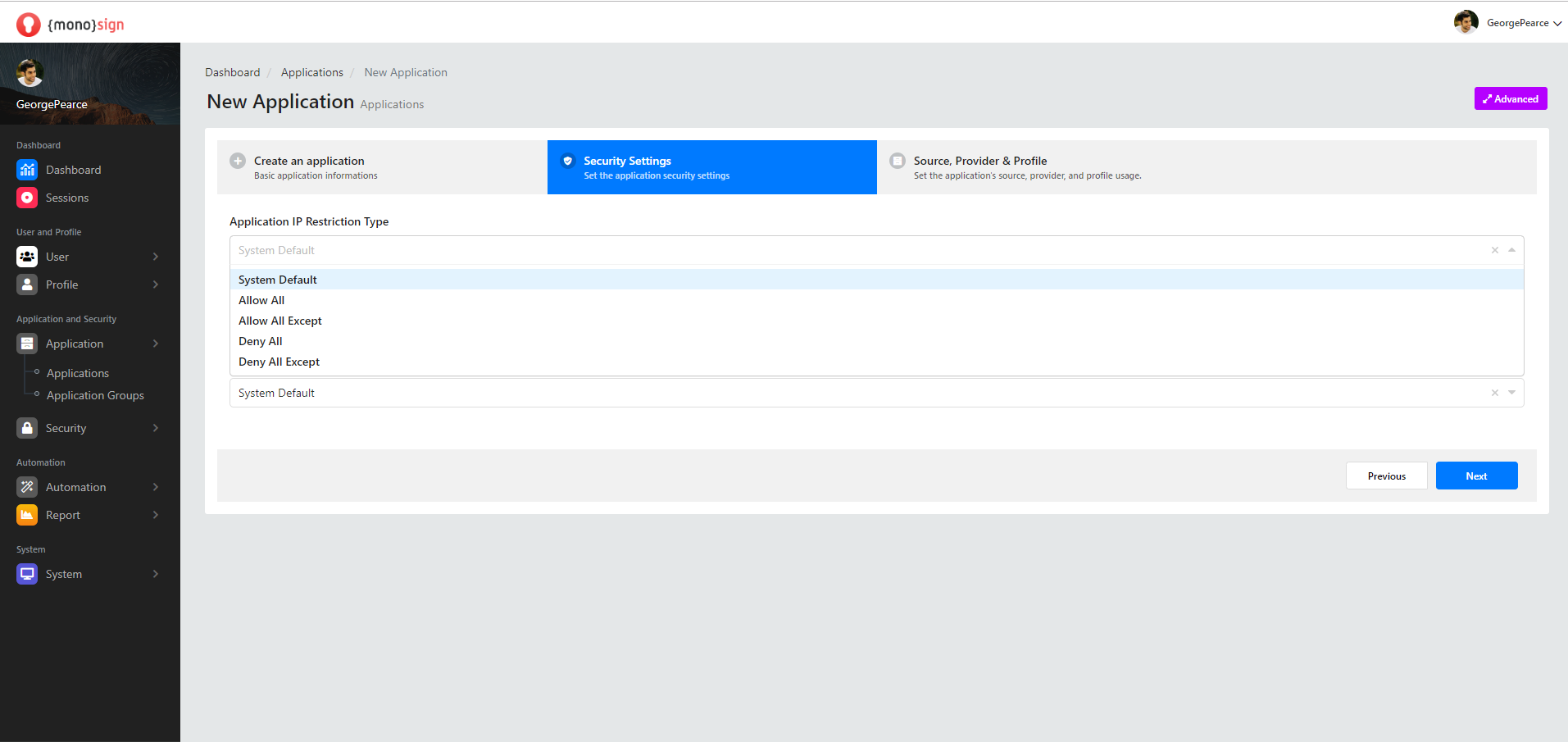
User IP Restriction Type
This is the part where we provide the User IP Restriction Type / Type. User restriction / type consists of 5.
1 - System Default, preferable can be preferred.
2 - Allow All, preference can be set according to all user IP restrictions.
3 -Allow, all options except preference ... All users except the option to allow IP restrictions / types can be selected.
4 -Deny All, preference selection/option to set preferences IP restrictions.
5 - Deny all but their preferences ... Deny all User IP restrictions / types can be selected.

Browser Restriction Type
This is the part where we specify the Browser IP Restriction Type / Type. Browser restriction type/type consists of 5 parts.
1 - Using the System Default feature, the system default option can be selected.
2 - Allow all browser restriction type(s) option can be selected by using the -Allow All feature.
3 - Allow all browser restriction type(s) except ... option can be selected using the -Allow All Except feature.
4 - Deny All , the option to deny all browser restriction type(s) can be selected.
5 - Deny All Except..., using the feature Deny all browser restriction type(s) except ... can be selected.
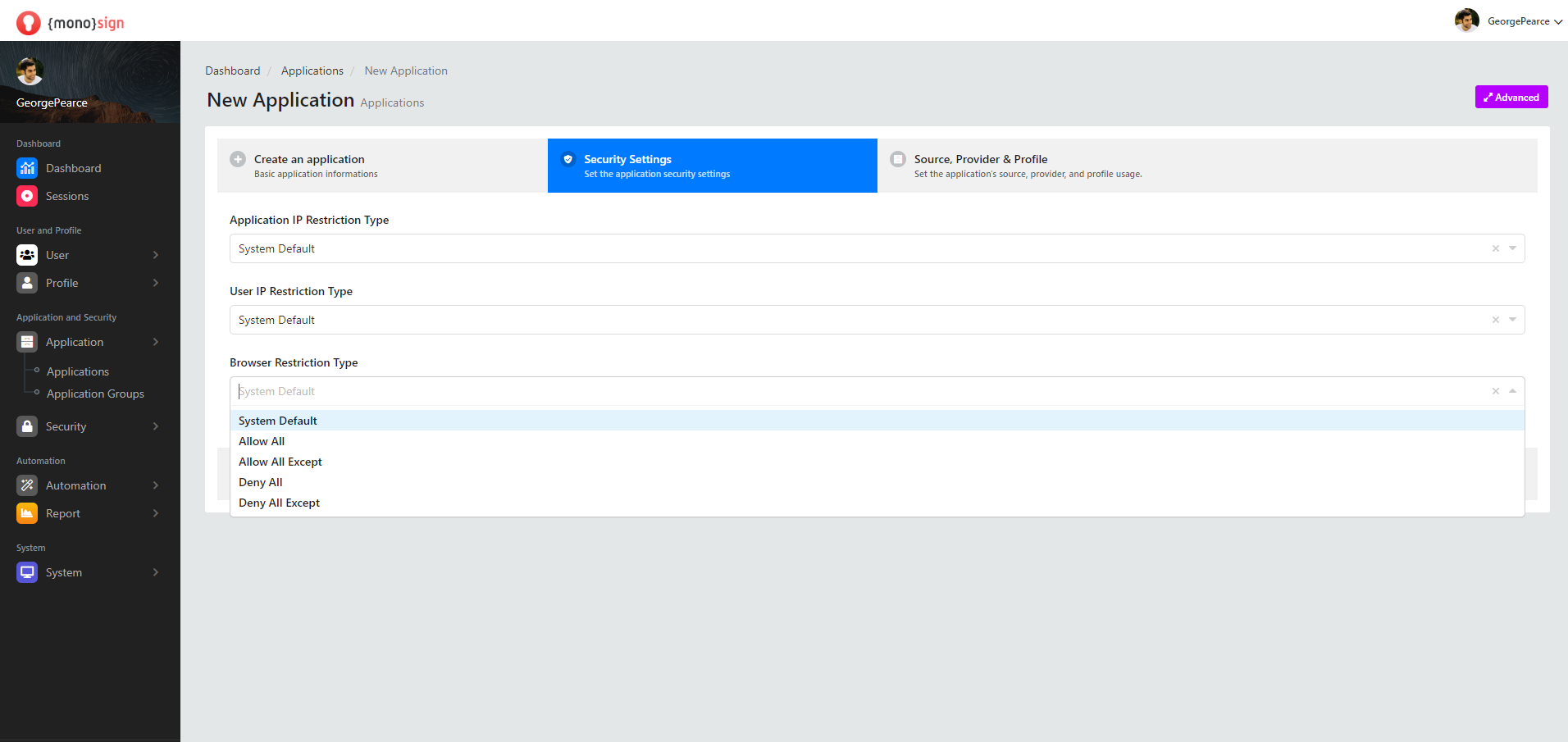
## Source, Provider & Profile
Source, provider and profile section is the section where you can view the application resource, provider and profile usage information and specify the information.
Fields |
|---|
User Access Type |
User Group Access Type |
Source Using Type |
Profile Access Type |
consists of fields.
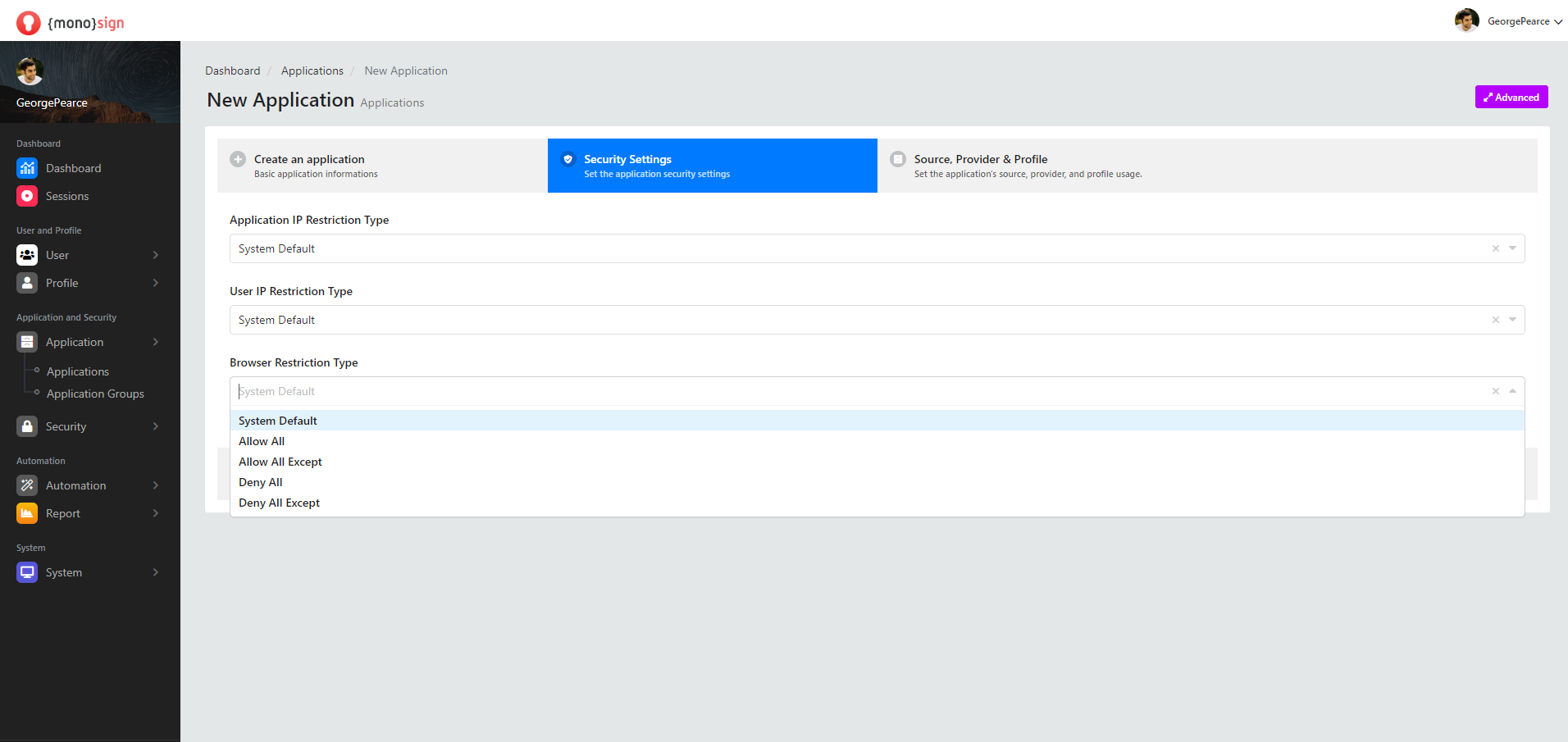
User Access Type
It is the part where the type / type of access of the users to the application is determined.
1 - System Default allows the user access type / type to be set as the system-defined default.
2 - Only Assigned Users allows the user access type / type to be set only by assigned users.
3 - Assigned Users and Defined Sources allows setting of user access type / type by assigned users and defined resources.
4 - All User allows the user access type / type to be set by all users.
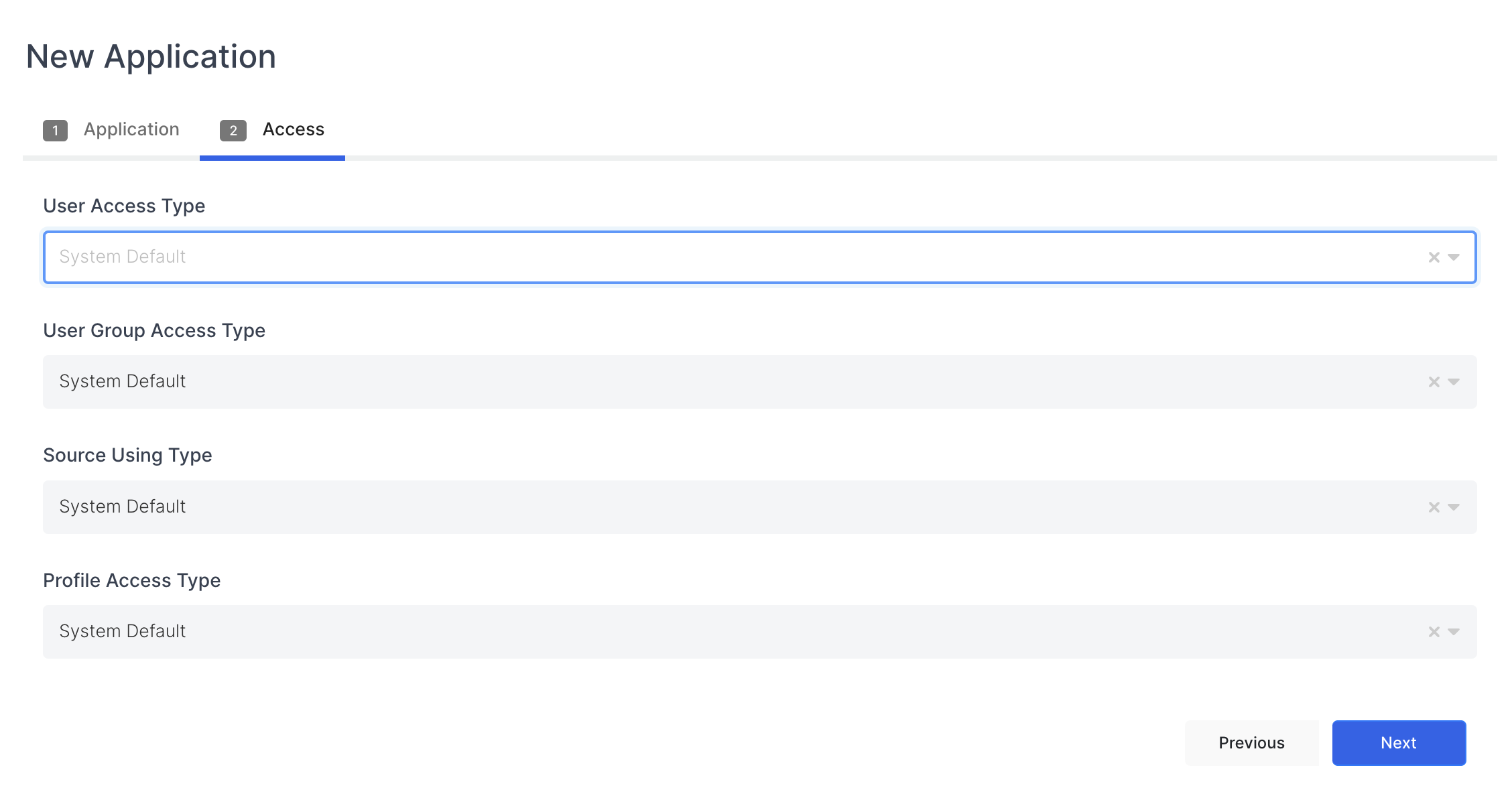
User Group Access Type
This is the part where the type / type of access of user groups to the application is determined.
1 - Allows the Systeam Defaul user group access type / type to be set as the system-defined default.
2 - Allows the Only Assigned Users user group access type / type to be set only by assigned users.
3 - Assigned Users and Defined Sources allows the user group access type / type to be set by assigned users and defined resources.
4 - All User allows to set the user group access type / type by all users.
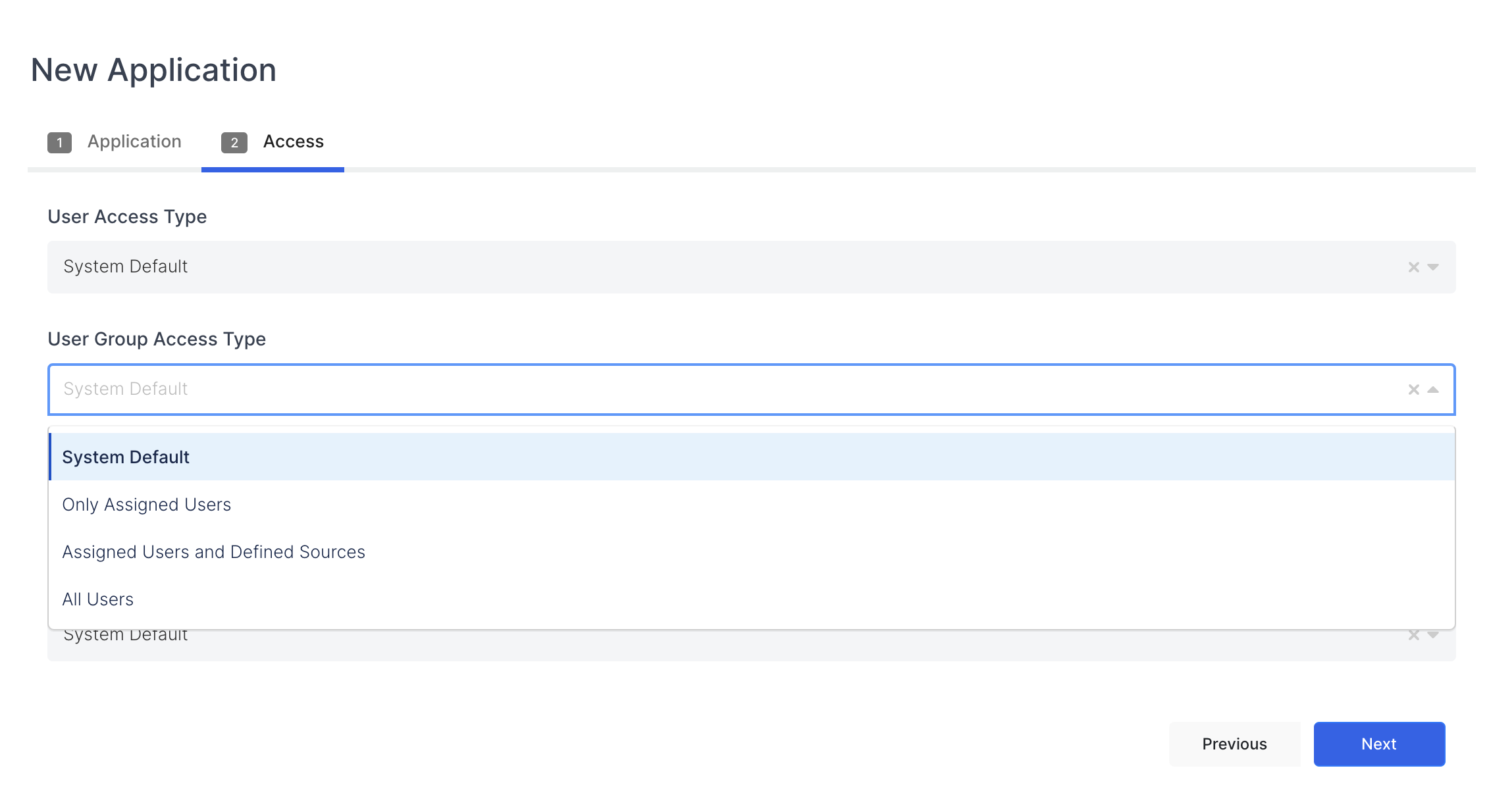
Source Using Type
The application is the part where the resource usage type / type is determined.
1 - System Default allows the application resource usage type / type to be determined by the system as the default.
2 - All Sources allows to set all sources option of application resource usage type / type.
3 - Only Defined Sources allows setting of application resource usage type / type only defined resources option.
4 - First Defined Next All Sources allows to set application resource usage type / type first defined all next resources option.
5 - Only Defined to Application allows setting of application resource usage type / type only defined for application.
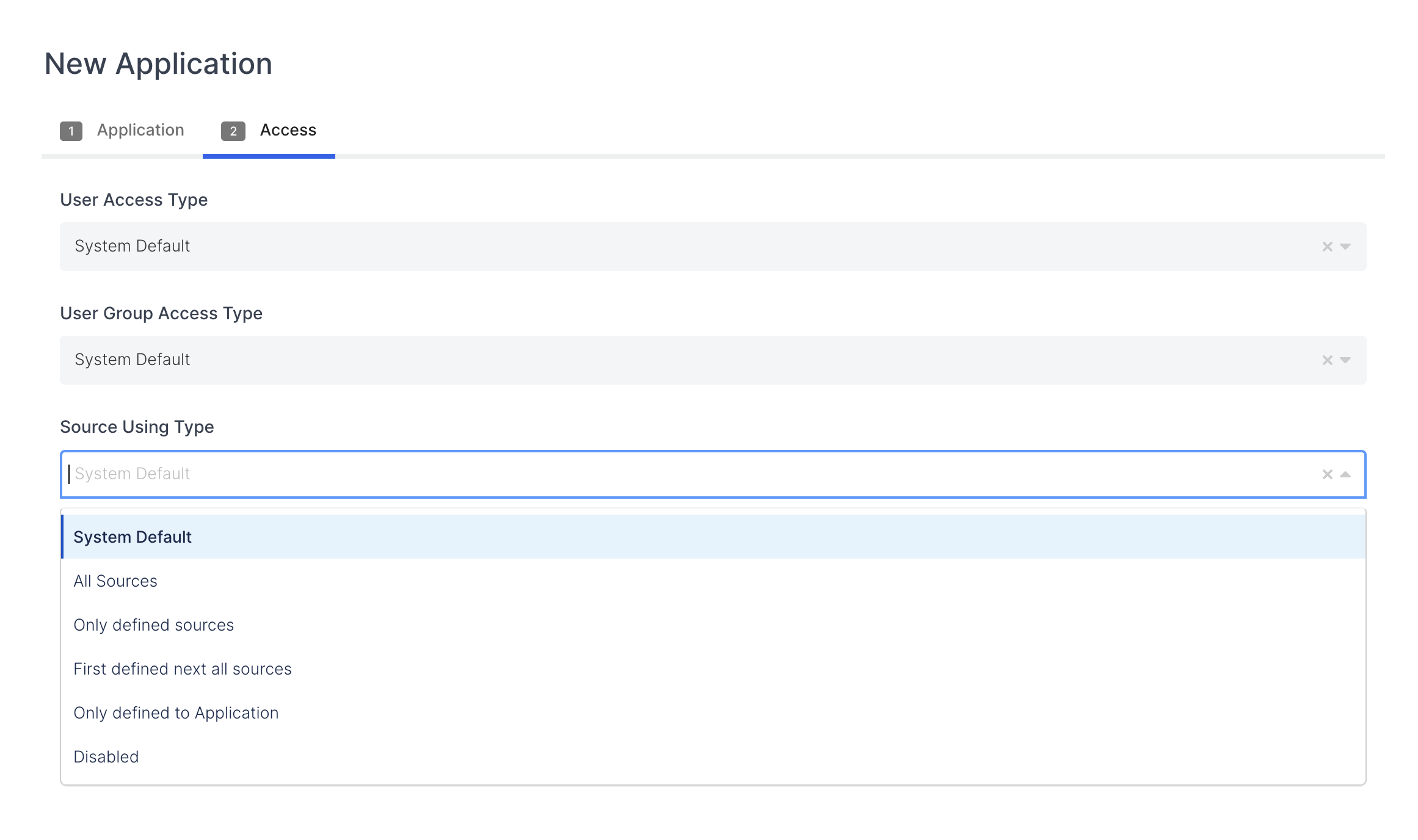
Profile Access Type
The application is the part where the profile access type / type is determined.
1 - System Default allows the application profile access type / type to be set as the system's default.
2 - Restricted allows setting of application profile access type / type of restricted profiles option.
3- All ( application allows setting of profile access type / type of all profiles option.
4 - Disabled Allows setting of application profile access type / type disabled.
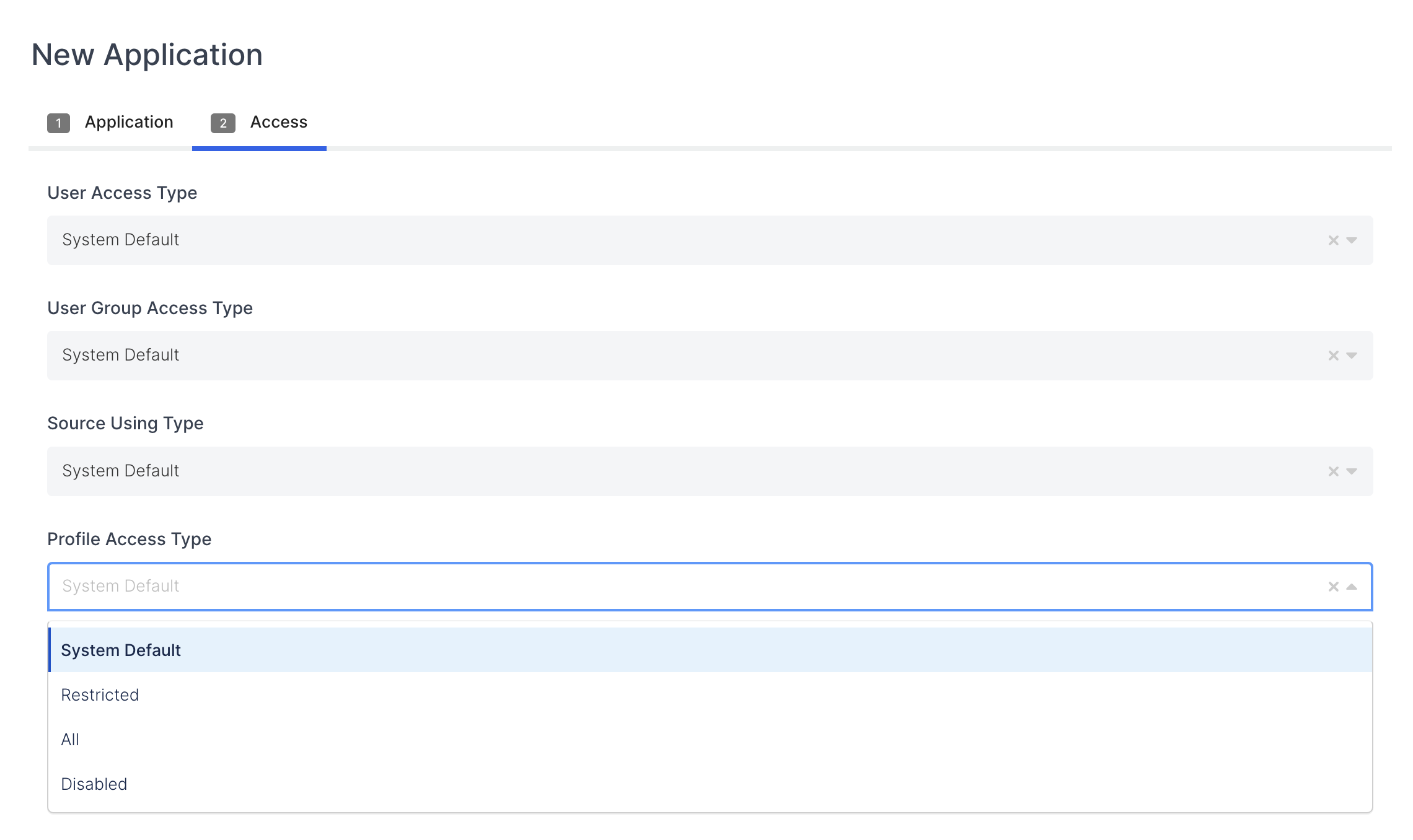
When you click on the purple advanced button at the top right of the page, it directs you to a more comprehensive page where you can create a new application. Since the add advanced application page has the same process as the edit operation in the quick actions menu, you can perform the operations here to specify the information about the advanced application add page.
When accessing the advanced application add page, the text of the purple button on the top right of the page will change to basic. The Basic button will take you back to the previous page, add new application.
The next and previous buttons on the Add new application page allow you to switch back and forth between the Create an Application, Security Settings and Source, Provider & Profile sections.
